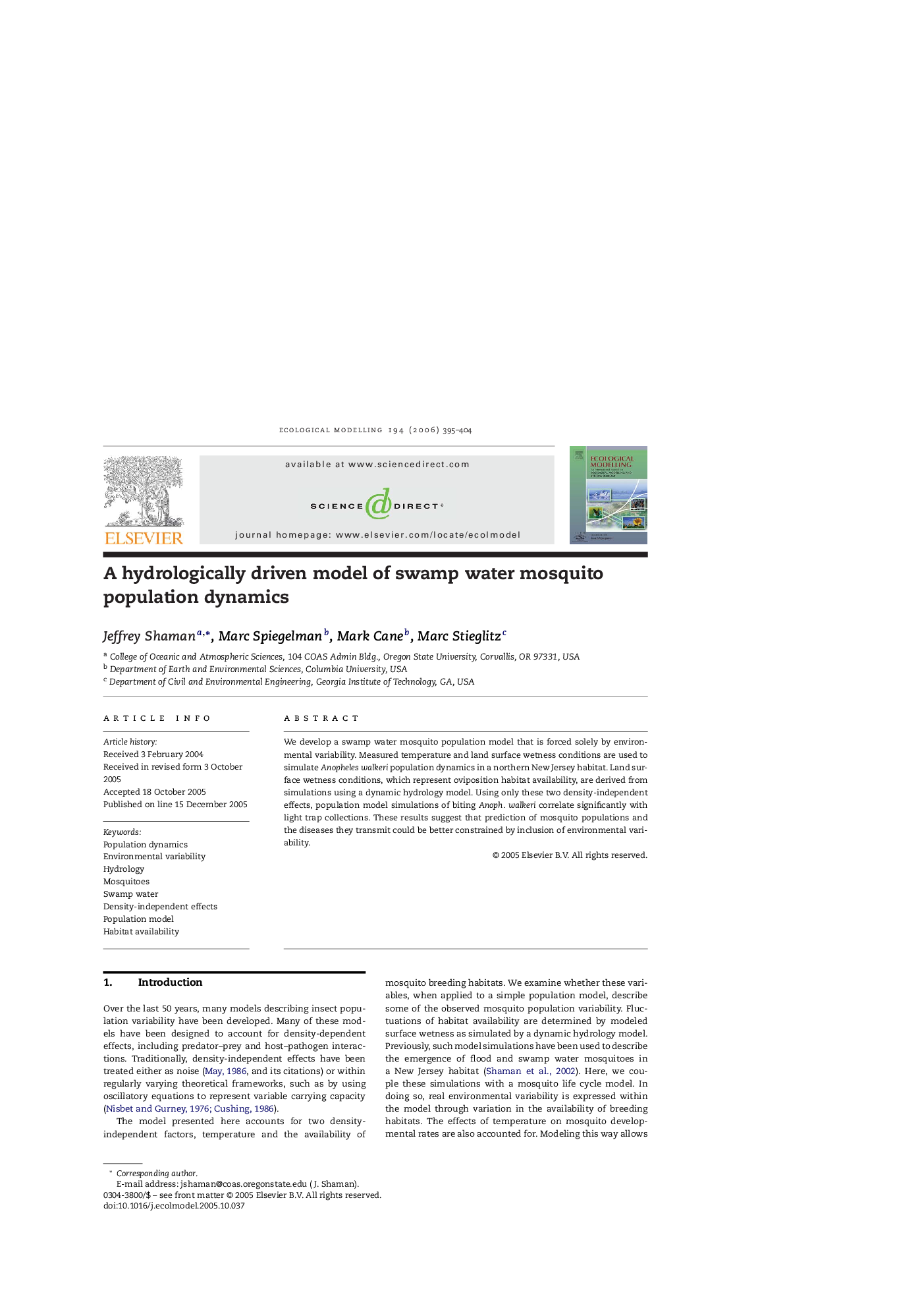| Article ID | Journal | Published Year | Pages | File Type |
|---|---|---|---|---|
| 4379313 | Ecological Modelling | 2006 | 10 Pages |
Abstract
We develop a swamp water mosquito population model that is forced solely by environmental variability. Measured temperature and land surface wetness conditions are used to simulate Anopheles walkeri population dynamics in a northern New Jersey habitat. Land surface wetness conditions, which represent oviposition habitat availability, are derived from simulations using a dynamic hydrology model. Using only these two density-independent effects, population model simulations of biting Anoph. walkeri correlate significantly with light trap collections. These results suggest that prediction of mosquito populations and the diseases they transmit could be better constrained by inclusion of environmental variability.
Keywords
Related Topics
Life Sciences
Agricultural and Biological Sciences
Ecology, Evolution, Behavior and Systematics
Authors
Jeffrey Shaman, Marc Spiegelman, Mark Cane, Marc Stieglitz,
